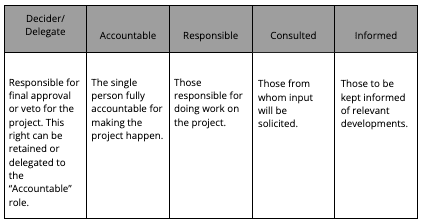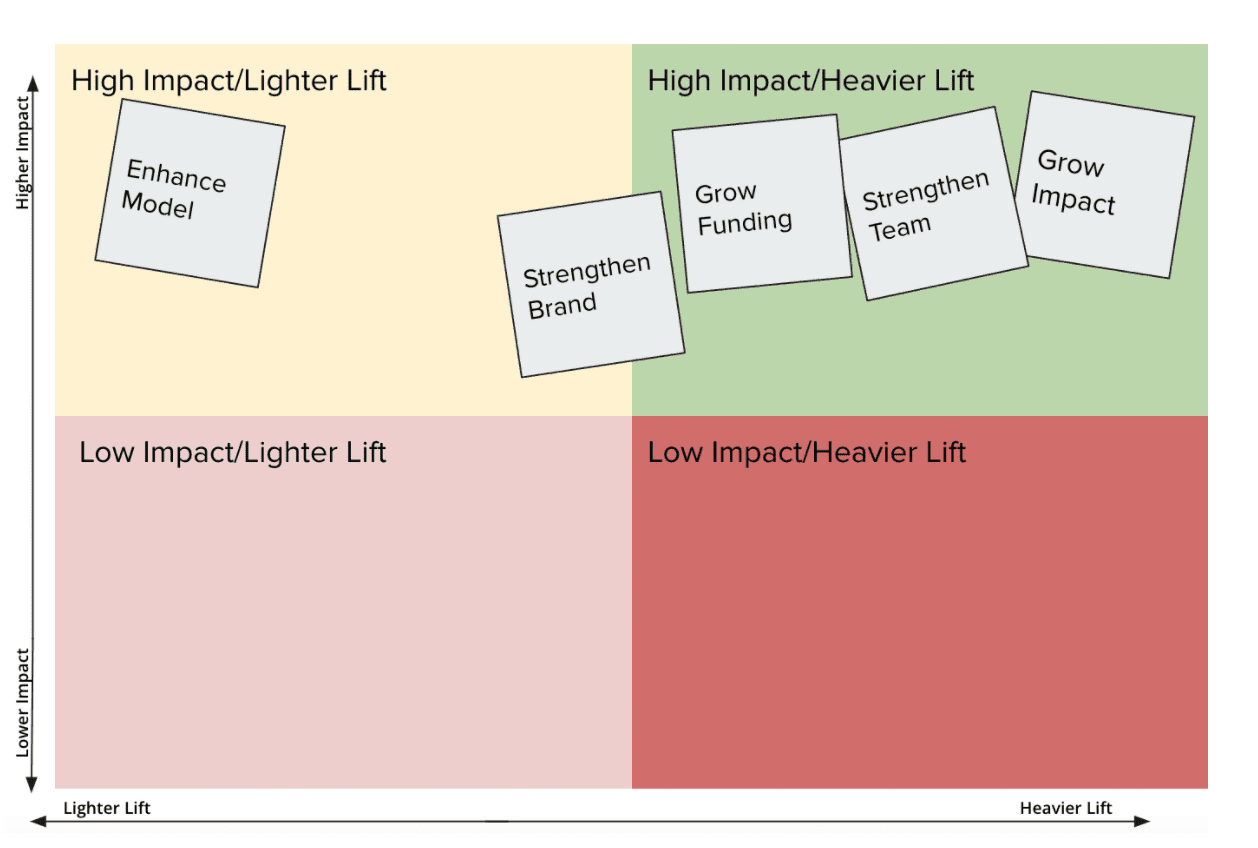Creating a successful marketing, fundraising, program or strategic plan for your nonprofit organization goes far beyond the creation of the deliverable itself. The development process is as important as the contents of the plans.
Having worked with dozens of nonprofits on planning, we know there are some key ingredients that lead to not only great plans, but successful outcomes as a result. The following are our top 10 guideposts for creating great marketing, fundraising, and strategic plans (among others).
-
Build a timeline and project plan that’s inclusive of all of your nonprofit’s stakeholders
Leaning into the Shared Power Strategy™ philosophy means beginning all of your planning processes with people at the center. When building your project timeline, you’ll want to determine when and where your nonprofit’s stakeholders should be involved and what role you expect them to play. This starts by identifying all of the internal and external groups that need to be involved in your marketing, fundraising or strategic planning process, including your clients, program participants and anyone else who your organization exists to serve.
In any planning process, we typically help our clients form three types of committees:
- A primary planning committee, made up of your nonprofit’s leadership. For functional plans, like marketing and fundraising, this committee may be limited to departmental leadership and staff.
- A board strategy committee that can weigh in on elements of your planning. This is most important for strategic planning, where this committee will provide input on elements of the plan before it’s shared with the full board. For your other plans, you will likely choose to leverage existing board committees, like your fundraising or marketing committees, for feedback.
- And, most importantly, a stakeholder committee made up of clients, community members, donors, funders or any other individuals who impact or are impacted by your mission.
-
Establish a decision-making framework
Since nonprofit strategies require stakeholder engagement to be successful, you also want to establish a decision-making framework to align your primary planning committee with how important decisions will be made among these groups. One helpful tool for considering how to involve stakeholders is the DARCI model for project management. DARCI stands for Decider/Delegate; Accountable; Responsible; Consulted; Informed.

-
Ensure nonprofit planning groups don’t become too large
Diverse stakeholder engagement in strategic activities, particularly message development and strategic planning, helps to ensure the priorities and perspectives of those who impact and are impacted by your nonprofit’s mission are reflected. However, you don’t want your planning groups to become too large, or it will be difficult to gather meaningful feedback. Your board strategy committee should include no more than 10 people and your stakeholder committee should include no more than 15.
The important thing to note is that all committee members need to commit to attending all of their committee meetings. In a typical strategy process, this means your primary planning committee is meeting weekly or bi-weekly; your board strategy committee is meeting only at strategic checkpoints throughout the project; and your stakeholder committee is participating one to three times (usually at the beginning, middle and right before the end of the strategy process). You don’t want people coming in and out of the process because if they aren’t fully up to speed on the work done, committee discussions, etc., they could provide feedback that derails progress made during the meetings they missed.
-
Ground your planning in your nonprofit’s vision and mission
Your nonprofit’s vision and mission should serve as the guide for all of the most important decisions your organization makes. So, before beginning any strategy development, you want to take the time to reaffirm these statements and ensure everyone is aligned with them. Remember, a vision statement describes the aspirational future your nonprofit is building toward and a mission statement describes the work you are doing every day to bring that vision to reality.
-
Set pillars, objectives and key results (or similar metrics) for all of your nonprofit’s strategies
Pillars, objectives and key results (OKRs) are three of the most powerful elements at the heart of every nonprofit strategic plan, marketing plan and fundraising plan. Together, they help nonprofits focus their efforts and make consistent, meaningful progress toward their missions.

Objectives are specific descriptions of the most important things you need to accomplish under each pillar, over the timeframe you are planning for. Under each pillar, you should have no more than 3 to 4 objectives, which are qualitative and time-bound. Key results are the benchmarks you can measure that track your progress toward each objective. Under each objective, you should have 2 to 5 key results that are quantitative and measurable.
Using these three elements together ensures your plans remain sufficiently ambitious, while also actionable and agile. Read our blog post How to Set Pillars and OKRs to Move Your Mission Forward to learn more.
-
Don’t forget to challenge the status quo
Save your activity plans and tactical calendars for laying out your daily, weekly, monthly and quarterly activities, like blog and social media posts, annual appeal schedules and program inputs. Reserve your plans and strategies for challenging the status quo and thinking audaciously about what you need to do to move your department or nonprofit forward. If you’re having a difficult time prioritizing what elevates to the level of your marketing, fundraising or strategic plan, consider using a tool like the Eisenhower Matrix to facilitate a discussion about urgency and importance.
-
Use listening sessions to include stakeholders in finalizing your nonprofit’s strategies
One of our favorite ways to engage stakeholders in planning processes is via listening sessions. As your primary planning committee puts shape to your plans, inevitably questions come up where you could use outside perspective. Write these things down and then host a listening session or two to hear from groups including your board, donors, funders and the community members you serve. Plan to ask two to five questions of these audiences to get the feedback you need to make sound strategy decisions.
-
Establish accountabilities
I’ve already talked about the need to develop OKRs, and once they are in place, you’ll want to make sure that everyone on your team is accountable to carrying them out. Walk through each one of your pillars, objectives and key results and assign an owner, this is the person who is responsible for bringing your plans to fruition.
-
Meet regularly as a team to assess progress
We recommend meeting annually to reassess any major organizational plan, quarterly to reassess objectives and to build the next quarter’s activity plans, and monthly or even weekly to report on your progress toward key results and ongoing activities. Use these meetings as an opportunity to discuss accomplishments and what is working, as well as what is not working and what may need to change.
-
Keep your nonprofit stakeholders informed once you get to work
I’ve talked a lot about engaging stakeholders throughout the process of developing your marketing, fundraising and strategic plans. It’s equally as important to keep them engaged and informed as the work progresses. This can be done formally through a community advisory council and ongoing listening sessions, or informally through impact reports, regular newsletters and other communications.
There you have it, the top 10 rules for nonprofit strategy development. I hope you find these helpful and can put them to use at your nonprofit on your next strategic initiative.